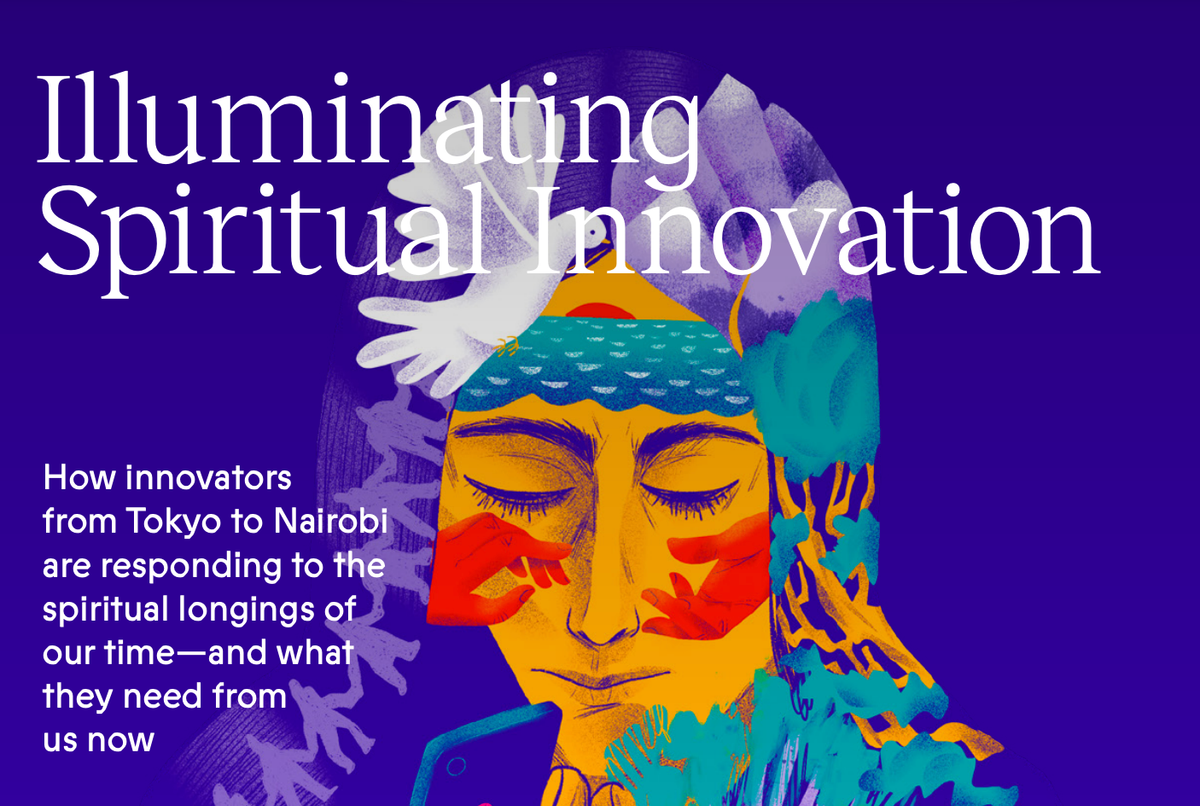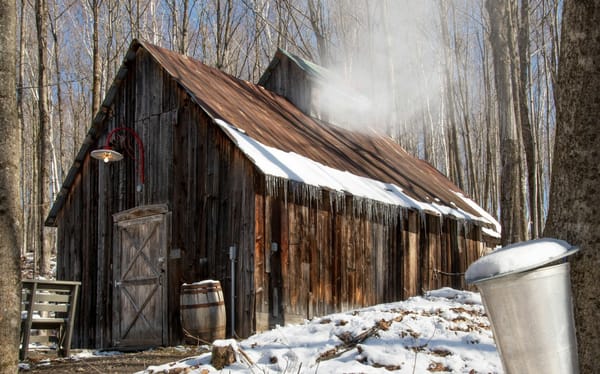New Study: Illuminating Spiritual Innovation
Think 'How We Gather,' But International

As promised, I've got a second practice-oriented study for you today, Illuminating Spiritual Innovation. Gonna dive right in.
The Team
The research and writing of this report was led by Sacred Design Lab, two founders of which (Angie Thurston and Casper ter Kuile) wrote the How We Gather report while students at Harvard Divinity School in 2015.
(If you haven't read it, I very much think you should. Ditto Something More, cut from the same cloth but more specifically about religiously affiliated communities responding creatively to the disaffiliation crisis.)
I regularly assign SDL's work to my students, along with a plea not to be condescending about the thoughtful approach and important subject matter tackled by this research and consulting team. (I was frankly embarrassed by what absolute jerks too many religious leaders were in response to this 2020 NYT piece about SDL and related groups.)
Here's an excerpt from Something More (p. 2) that sets the context this team is responding to:
American religion is changing.
Secular communities increasingly fulfill religious functions and new religious communities barely resemble their institutional forebears. Meanwhile, 3,500 churches close each year. To organized religions in crisis, our report issues a challenge: How might they transform to meet a rising generation?
Disagree if you like with their approach (religiously omnivorous, "combin[ing] scholarly knowledge with real-world applications") and style (millennial, polished, corporate-curious), but they are asking the right questions.
The Study
I haven't read every single report as closely as this one, but a cursory browse certainly suggests Illuminating Spiritual Innovation is SDL's most ambitious project yet. The research team ...
conducted over 100 interviews with both practitioners and academics across 37 countries in Asia, Latin America, Africa, the Middle East, Oceania, Europe, and North America, and the authors took research trips to Japan, India, Kenya, the United Arab Emirates, Egypt, and Brazil.
So they connected (via big assists from regional experts) with similar kinds of religious and spiritual leaders as they have in previous studies. But they engaged much more intentionally with the issues raised by this international lens, including the impacts of colonialism and global capitalism.
The report includes an introduction that defines spiritual innovation ("novel ways to address spiritual longings for belonging, becoming, and beyond," p. 17) and makes the case for why we need it (p. 13):
We have been tightening the strings of technology and business with unrelenting force, dedicating untold effort, attention, and resources to innovation in these sectors. The music produced has been captivating—smart devices, artificial intelligence, breakthroughs in medicine, and feats in space exploration. Yet, in this ceaseless tightening, the strings are at a breaking point threatening to destroy the instrument itself.
Meanwhile, the strings that might evolve our spiritual, moral, and ethical life have been left too loose. Neglected, discounted, and under-resourced, they struggle to produce a melody that can heal and transform the modern world. The consequences often feel intractable: loss of human connection, lack of moral leadership, profound violence and war, erosion of communal values, unprecedented environmental degradation, political and social division, soaring economic disparity, and a pervasive sense of existential angst. In other words, a world rich in ideas but impoverished in ideals.
From there, the report explores the major themes that emerged from the team's interview analysis. I'll let you discover those for yourself, because I want to focus on another aspect of the work.
My Takeaway
One thing I learned in grad school the second time around was to always have at least one pithy, memorable, useful takeaway from any paper I read. If there were multiple takeaways, or an important complex argument to internalize, fine. But having a quick, singular "so what?" became a way to decide I could be "done" with exploring a paper that wasn't really speaking to me and I might never otherwise return to.
This report did speak to me, as the group's work always does. But one idea (OK, three ideas) that keep popping up through the paper feel like an especially important and useful tool for thinking about innovation.
SDL is realistic and appropriately critical about the potentially toxic dimensions of spiritual innovation. Critiques of the people and groups they study often center on the lack of community guardrails or of appropriate grounding in a genuine, coherent wisdom tradition.
In other words, this group is thinking about how we balance enthusiasm for spiritual innovation with concern about its potential downsides. (At least the concerns that aren't just entrenched, self-protective unwillingness of those institutions to change to meet changing social circumstances.)
How can we strike that balance? The group has three criteria they usually find present in healthy spiritual innovation that leads to genuine flourishing:
There are lots of frameworks out there for traditioned innovation, faithful innovation, etc. I'm more concerned that innovators have a framework than about what framework they choose. And we're all more likely to work from guiding principles if they are very simple.
Of course, a multi-faith perspective like SDL's may make it easier to articulate a very simple framework, since there's no pressure to lean deeply into any one tradition's religious particularities. But for me, these three simple criteria—spiritual integrity, project sustainability, community support—really jumped off the page. I'll definitely be thinking about them next time I'm trying to get my head around a new initiative, project, or community.


